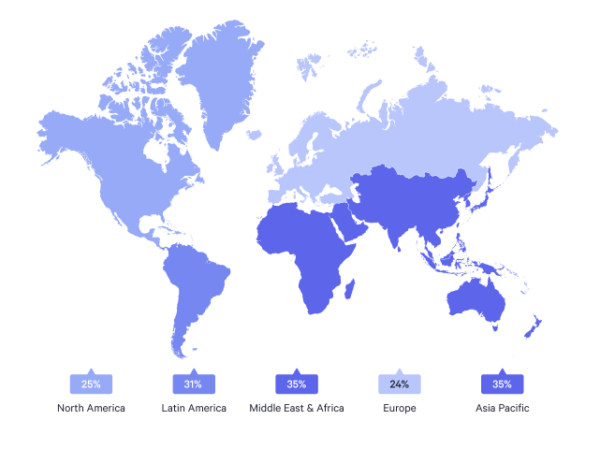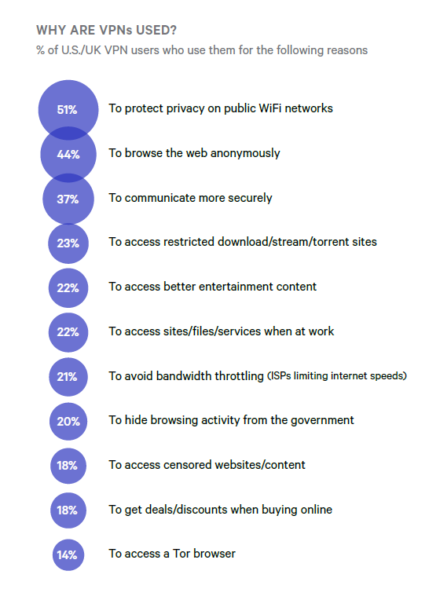VPNs are mainstream, which is good news
Virtual private networks (VPNs) have been growing in popularity for the last three years, a notable trend revealed in a collaborative report [PDF] by Top10VPN and GlobalWebIndex. This year is no different.
When a majority of the world’s internet users are in isolation due to the COVID-19 global pandemic, the increase in VPN usage is likely and expected, especially with so many people moving regular work from offices to their very homes. VPNs are best used in this time when employees cannot be physically within office premises to securely connect and access sensitive files, local apps, and other internal resources they need to do their job.
A jump in work-from-home employees isn’t the only reason why VPNs nowadays are in high demand. If anything, its steady growth was suddenly sped up by the effects of the current pandemic, introducing a historical spike in usage while internet users are thrust to a “new normal” when it comes to living life closer to family and away from colleagues, extended family, friends, and strangers.
However, there are other factors at play when it comes to motivations for using VPNs. The report entitled “The Global VPN Usage Report 2020” sheds a light on these and more. Let’s take a look.
Current VPN usage trend
Why use VPNs?
More than 30 percent of internet users are now using VPNs, with the heaviest users being in Asia and the Middle East & Africa regions. Specifically, Indonesia and India—61 percent and 45 percent, respectively—have the biggest number of VPN users compared to other countries. If you may recall, the Indonesian government have made attempts to filter content their citizens see online, especially on social media platforms like Facebook, Twitter, and Reddit. The use of certain communication channels, such as WhatsApp, were also restricted.

It’s not unusual to say that some VPN growth actually stems from attempts to enact censorship over a population. Note that while VPN usage is high in areas where government repression is heaviest, these are also the countries where the use of VPN is legal.
Perhaps surprisingly, countries in democratic countries like Australia (69 percent) and the Netherlands (76 percent) have seen a notable market growth over a three-year period.
“In 2017, the Netherlands introduced a law that gave the intelligence services the right to wiretap online communications around suspects on a large scale and store the data for a period of 3 years,” explains Pieter Arntz, malware intelligence researcher for Malwarebytes, regarding this trend, “For that reason, the law was called the “Sleepwet” (or dragnet law). Amnesty International and local privacy advocates made objections against the scale and the long retention period. Since the introduction, we have seen a big rise in the use of VPN’s in the Netherlands.”
A data retention law coming into effect that year in Australia is the likely trigger for citizens to start using VPNs.
The report also outlines other reasons why people use VPNs.

In some countries, government surveillance isn’t a massive concern. What makes their citizens opt to use VPNs is to hide their browsing activities from potential snoopers, of which might be their ISP, advertisers, or threat actors.
Who uses VPNs?
For every 10 internet user, 3 use VPNs, according to the report.
Below is a global profile of who uses VPNs based on demographic data collected for this study. A VPN user is typically:
- Male (36 percent, compared to 26 percent female)
- Young (average of 37 percent between Gen Y and Gen Z users, compared to only an average of 21 percent for Gen X and Baby Boomers) *
- More educated (average of 37 percent between college/university students and post-graduate users, compared to users who are schooling at the age of 18 and below)
- Mobile users (64 percent, compared to 62 percent of PC/laptop users)
*Older generations are notably catching up, though.
Heavy users in the APAC and MEA regions are young users who are “more urban and more affluent, relative to the rest of the population”. They are also more comfortable with digital tools.
What’s in a user’s VPN wish list?
Most users (72 percent) in the US and UK are using free VPNs compared to those who opted to pay (36 percent). For payers, the most common reason for this is to avoid the sharing of their information with third parties (54 percent).
When looking for a VPN, users prefer those with reliable connection (54 percent), that are easy to use (54 percent), quick (54 percent), has privacy/logging policies (43 percent), and reasonably priced (42 percent).
What attitudes or behaviors do VPN users have?
VPN users are more likely to be consistent with how they protect their online privacy than someone who doesn’t use a VPN. This means they use other measures like deleting browser cookies and using browsers that promote private browsing.
It also came out that internet users are at least aware that protecting their privacy online is important but don’t know how. Even those deemed privacy-conscious are mostly not using VPNs.
When it comes to frequency in use, users in the US and UK tend to use VPNs every day for their daily browsing activities, not just for more private browsing. Younger users in these regions also claim that they see VPNs, primarily, as a privacy tool.
The road to safer surfing
It’s always interesting to take note of trends, motivations, and even buying behavior. However, there are other points in the report that merit some highlights. For one, many users associate VPNs with the word “secure”, although as with all things occasionally this isn’t the case. This is particularly true for mobile devices.
When it comes to finding “the one” VPN for you, it is therefore no longer enough to just take other people’s word for it. It is more crucial than ever for users to go hands on and experience the products themselves. It is also important that users do a little investigative work about the company behind the software or service they were eyeing to try out. And when you do, please remember: Ask the right questions.
Good luck!
The post VPNs are mainstream, which is good news appeared first on Malwarebytes Labs.

